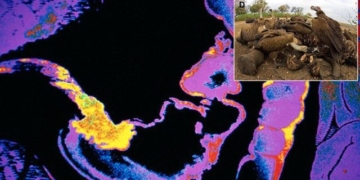The Secrets of the Solar System’s Formation Set to Be Revealed Soon? For the first time, dust samples from distant space contained in a comet have been collected on Earth by the U.S. space agency (NASA)…
A small box on board the “Stardust” spacecraft landed on the morning of January 15, 2006, at a military base in Utah, USA. On January 17, 2006, it was taken to the Lyndon B. Johnson Space Center in Houston, Texas, to separate the cosmic dust from other impurities.

Will the secrets of the Solar System’s formation soon be revealed? (Photo: Wikipedia)
“NASA has long been interested in studying the material composition of comets to better understand the structure of the Solar System. On July 4, 2005, at a distance of about 134 million km from Earth, a 400 kg probe collided with the comet “Tempel-1”.
According to the opinion of Vladimir Fortov, Vice President of the Russian Academy of Sciences, “the bombardment” of the comet that took place recently has had no impact on our Earth.
The dust samples collected were formed 4.5 billion years ago and can be compared to the time of the formation of the Solar System, helping scientists understand our “Solar System civilization.”
“In this box are our treasures,” stated Don Brownlee, the principal investigator of the “Stardust” project. The New York Times reported confirmation from experts that the collected dust particles are no thicker than a human hair, yet they contain the keys to unlocking the secrets of the Solar System’s formation. Moreover, they provide fundamental factors that led to the emergence of life on Earth. These dust particles are linked to the time when life first appeared in the Solar System, and these pieces of evidence have never been seen before – according to Dr. Simon Green from the Open University of the United States.
The “Stardust” spacecraft has been operational for seven years, during which it traveled 5 billion km through space, notably carrying a 45 kg device to collect cosmic dust.
The “Stardust” spacecraft was launched in 1999, and on January 2, 2004, it flew past the tail of the Wild 2 comet and collected dust samples from it.
Scientists believe that the Wild 2 comet originates from the Kuiper Belt located beyond the planet Neptune. In addition to collecting dust, it also performed imaging and gathered other scientific data.
Duy Khánh (Compilation of news sources from Russian news agency РИА News)

















































